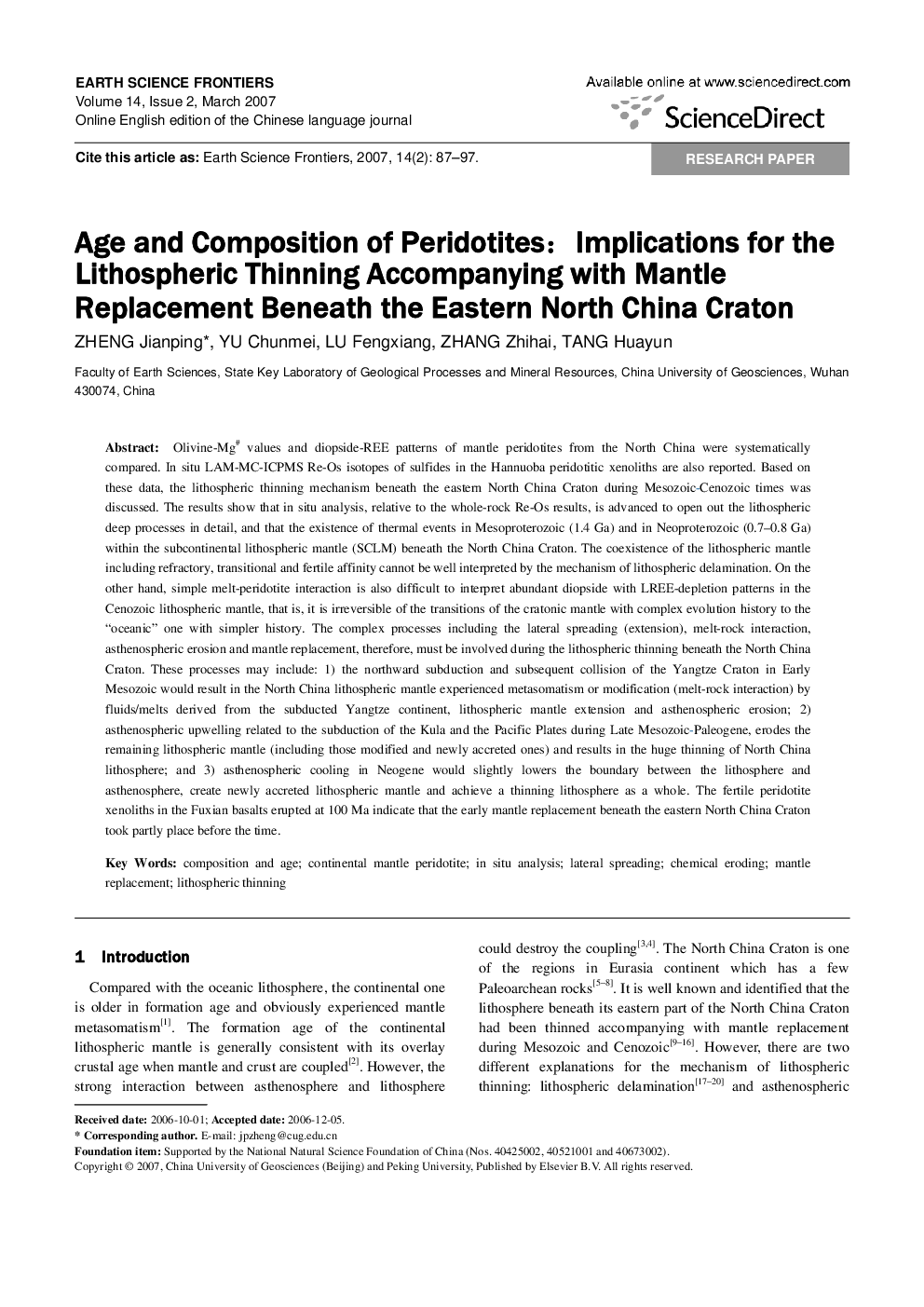| کد مقاله | کد نشریه | سال انتشار | مقاله انگلیسی | نسخه تمام متن |
|---|---|---|---|---|
| 4701692 | 1352725 | 2007 | 11 صفحه PDF | دانلود رایگان |

Olivine-Mg# values and diopside-REE patterns of mantle peridotites from the North China were systematically compared. In situ LAM-MC-ICPMS Re-Os isotopes of sulfides in the Hannuoba peridotitic xenoliths are also reported. Based on these data, the lithospheric thinning mechanism beneath the eastern North China Craton during Mesozoic-Cenozoic times was discussed. The results show that in situ analysis, relative to the whole-rock Re-Os results, is advanced to open out the lithospheric deep processes in detail, and that the existence of thermal events in Mesoproterozoic (1.4 Ga) and in Neoproterozoic (0.7–0.8 Ga) within the subcontinental lithospheric mantle (SCLM) beneath the North China Craton. The coexistence of the lithospheric mantle including refractory, transitional and fertile affinity cannot be well interpreted by the mechanism of lithospheric delamination. On the other hand, simple melt-peridotite interaction is also difficult to interpret abundant diopside with LREE-depletion patterns in the Cenozoic lithospheric mantle, that is, it is irreversible of the transitions of the cratonic mantle with complex evolution history to the “oceanic” one with simpler history. The complex processes including the lateral spreading (extension), melt-rock interaction, asthenospheric erosion and mantle replacement, therefore, must be involved during the lithospheric thinning beneath the North China Craton. These processes may include: 1) the northward subduction and subsequent collision of the Yangtze Craton in Early Mesozoic would result in the North China lithospheric mantle experienced metasomatism or modification (melt-rock interaction) by fluids/melts derived from the subducted Yangtze continent, lithospheric mantle extension and asthenospheric erosion; 2) asthenospheric upwelling related to the subduction of the Kula and the Pacific Plates during Late Mesozoic-Paleogene, erodes the remaining lithospheric mantle (including those modified and newly accreted ones) and results in the huge thinning of North China lithosphere; and 3) asthenospheric cooling in Neogene would slightly lowers the boundary between the lithosphere and asthenosphere, create newly accreted lithospheric mantle and achieve a thinning lithosphere as a whole. The fertile peridotite xenoliths in the Fuxian basalts erupted at 100 Ma indicate that the early mantle replacement beneath the eastern North China Craton took partly place before the time.
Journal: Earth Science Frontiers - Volume 14, Issue 2, March 2007, Pages 87-97